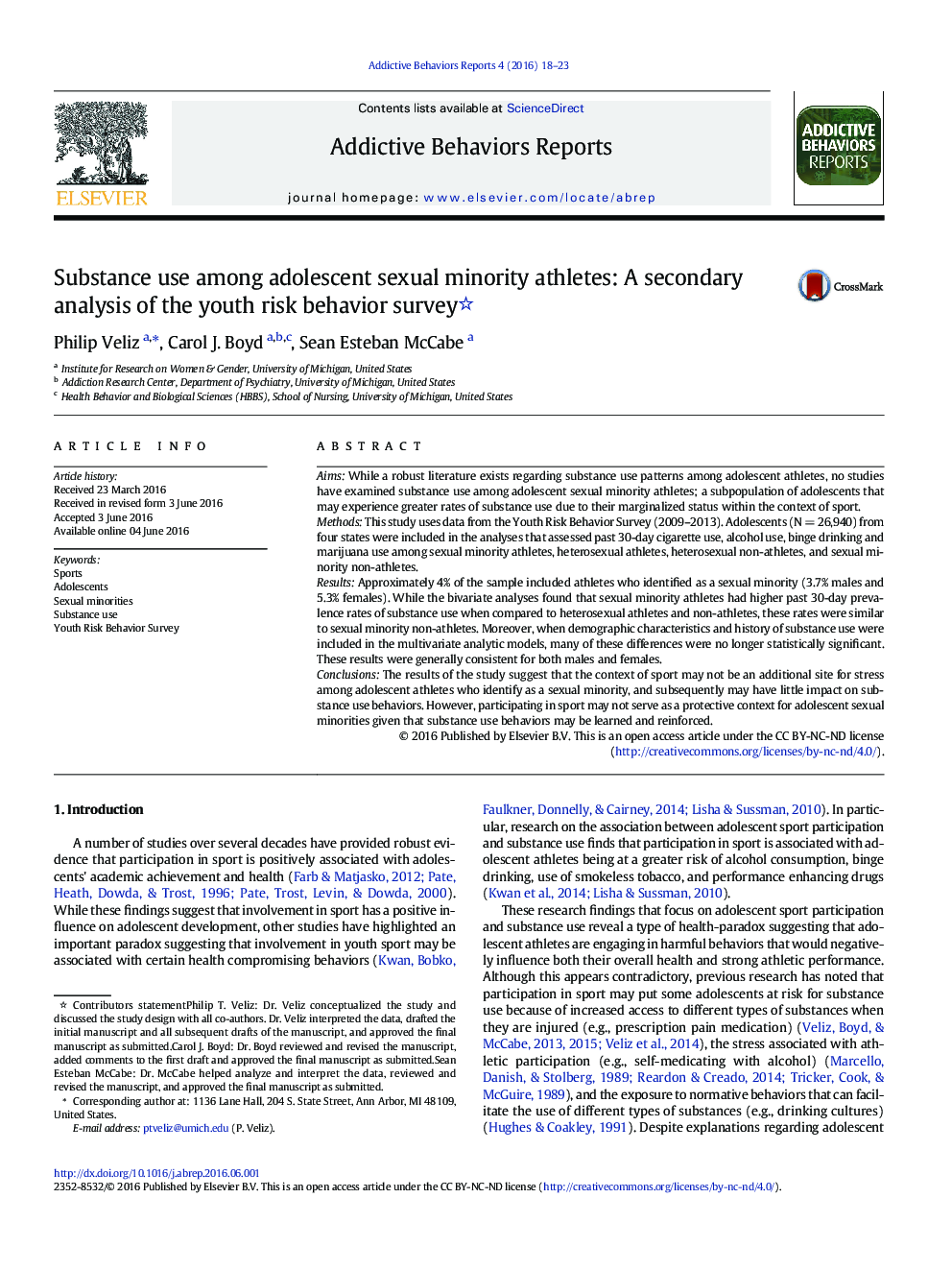| Article ID | Journal | Published Year | Pages | File Type |
|---|---|---|---|---|
| 900718 | Addictive Behaviors Reports | 2016 | 6 Pages |
•Approximately 4% of the sample included athletes who identified as a sexual minority.•The context of sport may not be an additional site for stress among sexual minority athletes.•Sport may not serve as a protective context for adolescent sexual minorities.
AimsWhile a robust literature exists regarding substance use patterns among adolescent athletes, no studies have examined substance use among adolescent sexual minority athletes; a subpopulation of adolescents that may experience greater rates of substance use due to their marginalized status within the context of sport.MethodsThis study uses data from the Youth Risk Behavior Survey (2009–2013). Adolescents (N = 26,940) from four states were included in the analyses that assessed past 30-day cigarette use, alcohol use, binge drinking and marijuana use among sexual minority athletes, heterosexual athletes, heterosexual non-athletes, and sexual minority non-athletes.ResultsApproximately 4% of the sample included athletes who identified as a sexual minority (3.7% males and 5.3% females). While the bivariate analyses found that sexual minority athletes had higher past 30-day prevalence rates of substance use when compared to heterosexual athletes and non-athletes, these rates were similar to sexual minority non-athletes. Moreover, when demographic characteristics and history of substance use were included in the multivariate analytic models, many of these differences were no longer statistically significant. These results were generally consistent for both males and females.ConclusionsThe results of the study suggest that the context of sport may not be an additional site for stress among adolescent athletes who identify as a sexual minority, and subsequently may have little impact on substance use behaviors. However, participating in sport may not serve as a protective context for adolescent sexual minorities given that substance use behaviors may be learned and reinforced.
